Common Injuries
Find out how we can help with your discomfort. Select the area where you feel your imbalance is to discover more.
Head and Jaw Pain
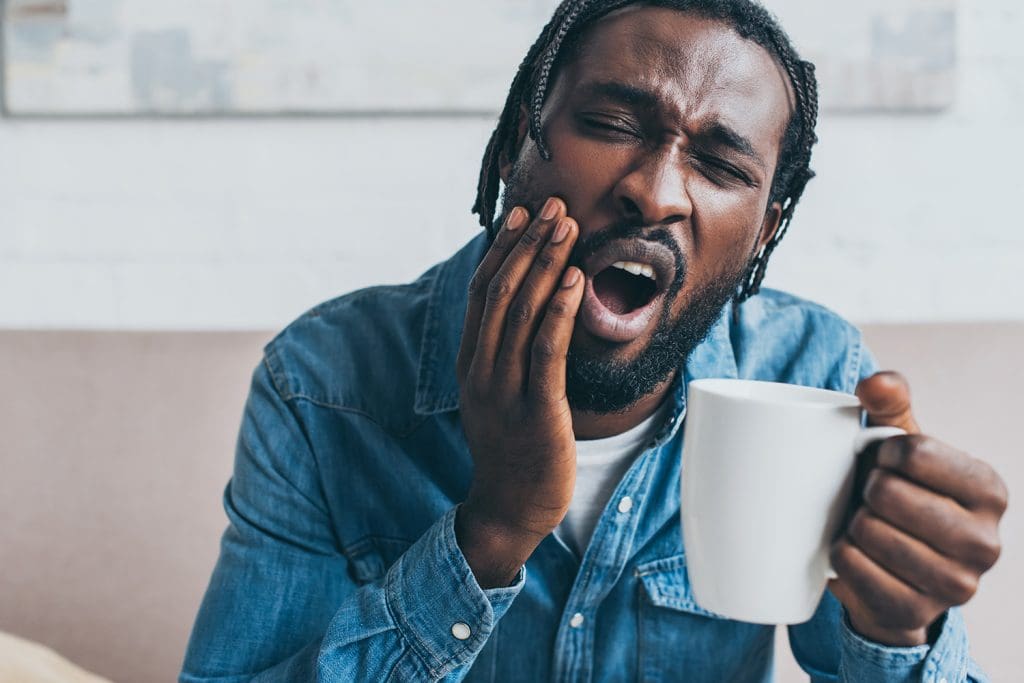
Headaches
The cause of headaches varies, which is why it is important to consult your chiropractor or doctor when you experience headaches do determine its cause and get the appropriate treatment.
Migraines
A migraine is a severe, painful headache, which affects around two million Australian adults. Women are more likely to experience migraines than men. While migraines can be experienced at any age they are more common before the age of 40. Half of the people who experience migraines have a family history of them.
Temporomandibular Joint Disorders
Temporomandibular disorder (TMD) is also known as jaw pain or temporomandibular joint pain (TMJ). There are many causes of jaw pain, some of which are treated successfully with chiropractic treatments.
Temporomandibular joint pain
Temporomandibular joint pain (TMJ) is known simply as jaw pain and can be caused by a variety of reasons. It is important to get an accurate diagnosis so the right treatment can be provided.
Neck and head pain
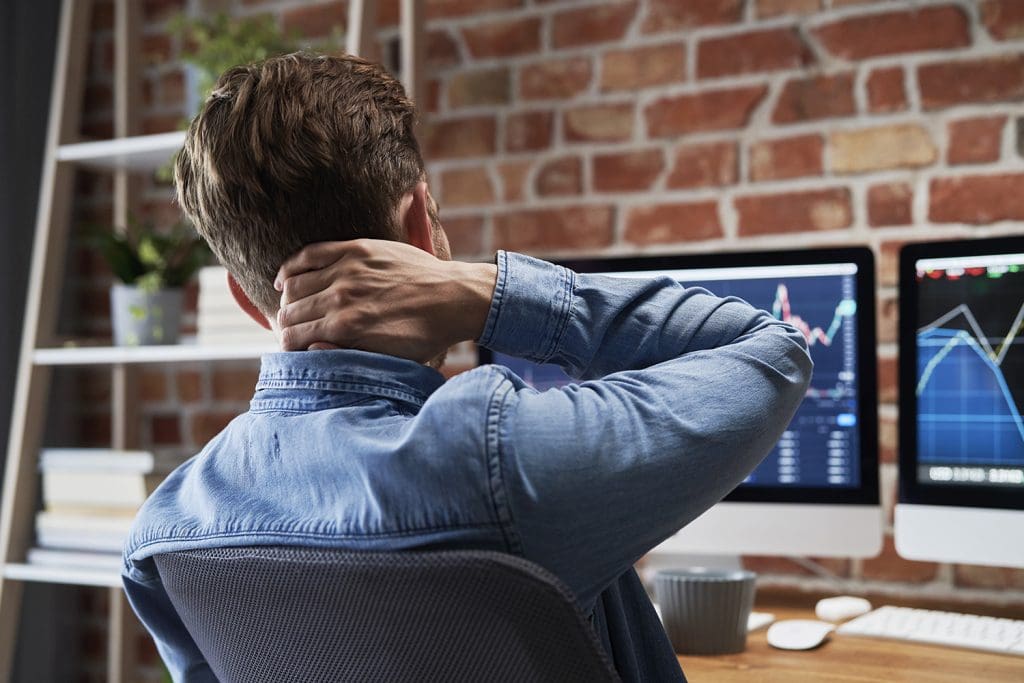
Cervical myelopathy
Cervical myelopathy is a condition that can cause neck pain and head pain along with a collection of neurological signs and symptoms
Cervical osteophytes
Cervical osteophyte formation may cause neck pain. Cervical osteophytes naturally occur as we age and as a result are more likely to cause neck pain in the middle to later years of life. It is important to accurately diagnosis cervical osteophytes are a source of neck pain so an effective treatment strategy and rehabilitation program can be started.
Cervical bone spurs
Cervical bone spurs can become a source of neck pain. The formation of bone spurs is typical with the normal ageing process. In advance cases bone spurs can begin to compress neural or joint structures.
Cervical stenosis
Cervical stenosis describes a reduction in the size of the spinal canals. Spinal canals are the tunnels through the spine that nerves and the spinal cord travel.
Cervical degenerative disc disease
Cervical degenerative disc disease describes is the process by which intervertebral discs go through wear and tear. In advanced cases, cervical degenerative disc disease can lead to chronic and persistent neck pain and discomfort.
Cervical disc herniation
Cervical disc herniation is a cause of neck pain and discomfort. Sometimes called neck disc herniation or a slipped disc in the neck.
Cervical arthritis
Cervical arthritis is a descriptive term to describe arthritic changes that occur in the neck. Arthritis implies a degree of wear and tear in the neck.
Cervical osteoarthritis
Cervical (neck) osteoarthritis is just another way to say neck arthritis. Neck arthritis describes wear and tear in the neck. This may occur due to previous injuries or may simply be a process of ageing.
Cervical foraminal stenosis
Cervical foraminal stenosis describes a reduction in the size of the tunnels (foramen) in the neck. These tunnels are important because spinal nerves exit the spinal column in these foramen. Compression of a spinal nerve can cause neck pain and neurological symptoms.
Cervical pinched nerve
The term ‘pinched nerve’ implies a nerve is being compressed. Cervical nerves are those that come out of the neck. Pinched nerves in the neck are relatively common. Compression of a nerve can come from multiple different structures in the neck.
Cervical facet syndrome
Cervical facet joint syndrome is a cause of neck pain and discomfort. The facet joints are located at the back of the vertebrae of the neck. Facet joints give the neck the ability to move.
Cervical facet joint pain
Cervical facet joint pain is pain that comes from the facet joints in the neck. Facet joints are important neck joints because they allow both neck movement and stability.
Cervical disc bulge
Disc bulges occur in the cervical spine (neck). A disc bulge is different from a disc herniation (slipped disc).
Cervical disc protrusion
A cervical disc protrusion is a type of disc herniation. A disc herniation occurs when a section of disc material moves out beyond where it normally sits.
Cervical spondylosis
Cervical spondylosis is a cause of neck pain. The term cervical implies wear and tear or arthritis in the neck.
Cervical spondyloarthropathies
Cervical spondyloarthropathies are also called spondyloarthritis and include ankylosing spondylitis, Reiter’s syndrome (reactive arthritis), enteropathic arthritis (associated with inflammatory bowel disease). In children, we call these juvenile spondyloarthropathies.
Cervical radiculopathy
Cervical radiculopathy is a term used to describes the dysfunction of a spinal nerve in the neck. This dysfunction typically results from becoming compressed by a structure such as a disc following a disc herniation.
Cervical discogenic pain
Discogenic pain in the neck implies that the intervertebral disc is the cause of neck pain. Intervertebral disc are located between the vertebral bones and allow for shock absorption and weight-bearing.
Neck whiplash
Whiplash is an acceleration-deceleration injury that usually occurs with motor vehicle accidents but can also occur from being pushed in the back, sporting accidents or falls. Whiplash is a common cause of neck pain.
Mid and Upper Back
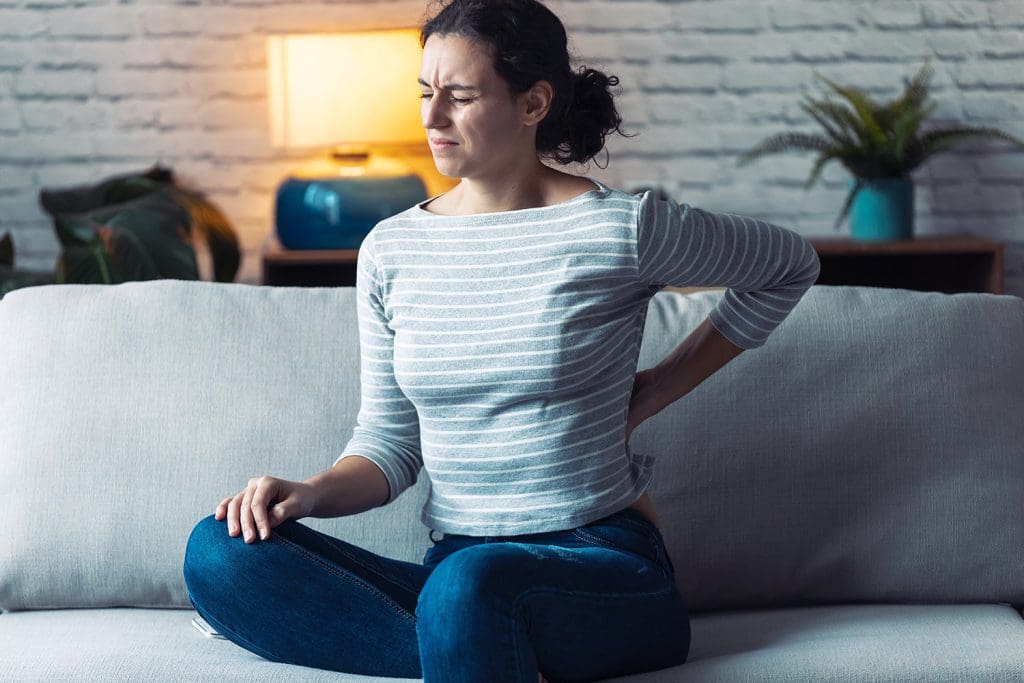
Mid back muscle pain
Muscle pain in the mid and upper back is common. Treatment of mid back muscle pain depends on the cause and a number of other factors. Chiropractic treatments are useful for this condition.
Mid back joint pain
Mid-back joint pain is common within the community. Pain can originate due to a variety of reasons such as joint stiffness, overuse (loading) or injury.
Thoracic myelopathy
Myelopathy refers to any condition that affects the spinal cord. There are a variety of different causes of myelopathy. Thoracic myelopathy suggests a condition of the spinal cord in the thoracic region of the spine (mid-back).
Thoracic spine trauma
Thoracic spine trauma can occur during sporting activities, motor vehicle accidents, falls and a variety of other accidents. Read the following article for more information on thoracic spine trauma.
Thoracic osteophytes & bone spurs
Osteophytes are also called bone spurs. In the thoracic (mid-back) spine, osteophytes develop from previous injury or general wear and tear (ageing). Thoracic spine (mid-back) bone spurs are not as common as bone spurs that develop in the neck and low back. Bone spurs are typically located where ligaments attach to bones, this is called the enthesis.
Thoracic spine stenosis
Thoracic spine central stenosis describes the process by which the canal around the spinal cord (central stenosis) becomes too small or the canal where the spinal nerves leave the spinal cord (foraminal stenosis). There are many causes of thoracic spine stenosis.
Thoracic degenerative disc disease
Thoracic degenerative disc disease refers to the process of wear and tear in the mid-back. This is a complex process and depends on many factors that are discussed here.
Thoracic arthritis
Thoracic arthritis is arthritis that develops in the mid-back. Thoracic arthritis is also called mid-back osteoarthritis, wear and tear and thoracic spondylosis.
Thoracic pinched nerve
A pinched nerve occurs when something compresses it. In the thoracic spine (mid-back) this is not common. Pinched nerves are more common in the neck and low back. In the mid-back, pinched nerves are usually caused by a disc bulge, disc herniation, slipped disc or bone spur.
Thoracic facet syndrome
Thoracic facet syndrome describes pain that is located over the back of the mid-back. This is where the facet joints are located. Facet joints are the ‘steering wheels’ of the back and may become inflamed or irritated for a variety of reasons.
Thoracic facet joint pain
The thoracic facet joints are located on the back of the spine. Every vertebra has a pair of facet joints. Facet joints allow for motion and ‘steer’ spinal movements. Thoracic (mid-back) facet joints can become inflamed, irritated or injured.
Thoracic disc bulge
thoracic disc bulge describes an intervertebral disc in the mid-back that is still intact by has bulged out to some degree. This usually occurs through the ageing process as the thoracic disc degenerate (undergo wear and tear).
Thoracic disc protrusion
A disc protrusion is a type of disc herniation. This is more common in the neck and low back when compared to the mid-back
Thoracic spondylosis
Thoracic spondylosis is a descriptive term that also means thoracic wear and tear or thoracic arthritis. The thoracic spine is also called the mid back.
Thoracic spondyloarthropathies
Thoracic spondyloarthropathies are a group of conditions that cause inflammation to the spine. They can cause inflammation to any part of the spine. It is more common for spondyloarthropathies to affect the low back and pelvic joints than the mid-back. Spondyloarthropathies include ankylosing spondylitis, reactive arthritis, enteropathic arthritis and psoriatic arthritis.
Thoracic radiculopathy
Thoracic radiculopathy is a descriptive term used to describe problems with spinal nerve conduction in the mid-back. This is typically caused by an intervertebral disc herniation that was compressed and irritated a nerve. Thoracic radiculopathy is not common when compared to radiculopathy in the neck and low back.
Acute mid back pain
Acute mid back pain is pain that has been present for under three months. There are many causes of acute mid back pain
Thoracic discogenic pain
Discogenic pain is back pain that is associated with an intervertebral disc. Discogenic pain in the mid-back can present in a variety of ways
Chronic mid back pain
Chronic mid back pain is pain that lasts greater than three months and has many causes.
Stiff mid back
Spinal stiffness in the mid back is common. Stiffness can result from a variety of causes. Chiropractic treatment are useful for this condition.
Thoracic spine tumour
Spinal tumours can be primary (from the tissue it affects) or secondary (from other sides).
Upper back arthritis
Upper back arthritis is a term that describes wear and tears in the upper back
Elbow and Forearm Pain

Biceps tear at elbow
Biceps tears at the elbow are usually associated with an injury or accident. Bicep tears are typically caused when lifting a heavy object. Some medical conditions and drugs can increase the risk of a bicep tear.
Elbow (olecranon) bursitis
Olecranon bursitis describes inflammation to the bursa on the back of the elbow called the olecranon bursa. Bursae are small pillows used to cushion soft tissues as they go over hard tissues such as bone. They reduce friction and allow things to move freely over one and other. Overuse is the primary reason bursae will become inflamed.
Tennis elbow
Tennis elbow is a condition that affects the tendons of the forearm as they attach at the elbow. This is an overuse injury that is common in sports such as tennis. You don’t need to play tennis to get tennis elbow, other causes range from holding a hammer to using a mouse.
Golfers elbow
Golfers elbow is an injury caused by overuse to the tendons on the inside of the elbow. Golfers elbow is typically caused by overuse that may occur during golf or a variety of other activities.
Biceps tendonitis
Biceps tendonitis is an injury that causes pain and inflammation of the biceps tendon. It can result from overuse or acute injury. People who play sports or have occupations that require a lot of lifting are more at risk of this condition.
Lumbar and Pelvis

Lumbar myelopathy
Lumbar myelopathy is a rare condition that can cause low back pain and buttock pain, along with a collection of neurological signs and symptoms.
Cauda equina syndrome
Cauda equina syndrome is a medically emergency and occurs when a large collection of nerves in the lower back suddenly become compressed. This may cause low back pain. Cauda equina syndrome may be due to a large lumbar disc herniation, surgery, trauma, fracture, hematoma or a tumour.
Lumbar spinal stenosis
Lumbar spinal stenosis can be the source of persistent and chronic low back pain. Lumbar stenosis describes a reduction in the size of the passageway that houses the spine or the spinal nerves in the vertebral column. Compression of neural tissue in the low back leads to low back pain and discomfort.
Lumbar bone spurs
Lumbar bone spurs can become a source of low back pain. The formation of bone spurs is typical with the normal aging process. Persistent stress placed on the spinal joints leads to bone spur development that can eventually protrude into delicate soft tissues or neural tissue and cause pain..
Lumbar degenerative disc disease
Lumbar degenerative disc disease describes the process of ageing and degeneration of the low back cartilage and joint structures. This can lead to low back pain and discomfort.
Lumbar pinched nerve
Lumbar degenerative disc disease describes the process of ageing and degeneration of the low back cartilage and joint structures. This can lead to low back pain and discomfort.
Lumbar radiculopathy
Lumbar radiculopathy implies that there is a conduction problem with a low back nerve. Radiculopathy is typically caused by compression of a nerve by an intervertebral disc (disc herniation). The compression limits the function of the nerve resulting in leg sensation changes, power loss and changes in the reflexes.
Lumbar facet joint pain
Lumbar facet joint pain is a common cause of low back pain and discomfort. The lumbar facet joints guide movement of the low back and are susceptible to injury during repeated movements and acute trauma.
Lumbar disc bulge
A lumbar disc bulge can cause low back pain and discomfort. Technically speaking it’s not the low back disc bulge that causes the pain. A low back disc bulge causes pain only when it places pressure on other structures such as nerves, and this causes low back pain and dysfunction. A large disc bulge may place tension on the spinal cord or spinal nerves or place pressure on the joints of the low back.
Lumbar herniated disc
Lumbar disc herniation is a common cause of low back pain and discomfort. A lumbar disc herniation is also called a low back disc herniation, slipped disc in the low back and a ruptured low back disc. Lumbar (low back) disc herniation is very common.
Lumbar disc protrusion
A disc protrusion is a type of herniation. It is the smallest type of herniation. Lumbar disc protrusion can cause significant pain and discomfort in the low back. When a disc protrusion compresses a nerve it may also cause leg pain and discomfort.
Lumbar discogenic pain
Discogenic low back pain implies that the intervertebral disc is the cause of low back pain. This is extremely common and accounts for up to 40% of low back pain (in some research). Discogenic pain can be a temperamental and persistent cause of low back pain.
Post laminectomy syndrome
Post laminectomy syndrome is also called failed back surgery syndrome. It is the condition that describes persistent low back pain following low back pain surgery. Low back surgery may include spinal fusion, laminectomy or discectomy.
Coccydynia
Coccydynia or tailbone pain can be a source of persistent low back and pelvic pain that should be evaluated by a chiropractor. This condition is not as common as other sources of low back pain. However, it can develop into a long-term problem.
Lumbar spondylolisthesis
Lumbar (low back) spondylolisthesis suggests forward slippage of one vertebra on another. The causes of spondylolisthesis include congenital spondylolisthesis, degenerative spondylolisthesis, isthmic spondylolisthesis, pathologic spondylolisthesis, iatrogenic spondylolisthesis and traumatic spondylolisthesis.
Lumbar spondyloarthropathy
Lumbar spondyloarthropathies are also called spondyloarthritis and include ankylosing spondylitis, Reiter’s syndrome (reactive arthritis), enteropathic arthritis and psoriatic arthritis. These conditions may lead to tissue irritation in the low back and cause ongoing low back pain and discomfort.
Ankylosing spondylitis
Ankylosing spondylitis is a spondyloarthropathy that causes joint inflammation. It commonly affects the low back joints leading to low back pain. Ankylosing spondylitis causes joint pain, inflammation and stiffness. The cause of ankylosing spondylitis is unknown.
Reiter’s syndrome
Reiter’s syndrome is often called reactive arthritis, and this describes a condition that causes pain and inflammation around the body, especially in the spine and low back. Reiter’s syndrome may be caused or triggered by a bacterial infection in the digestive and urinary tract.
Enteropathic arthritis
Enteropathic arthritis develops in approximately 9% to 20% of people with inflammatory bowel disease such as ulcerative colitis and Crohn’s disease. People who have enteropathic arthritis have episodes of sacroiliac joint pain (pelvic joints), low back pain and other joint pain.
Sciatica
Sciatica is a symptom. It refers to pain down the leg as a result of a pinched nerve. Pain down the leg is technically called radicular pain.
Sacroiliac disorders
The sacroiliac joints are the two joints at the back of the pelvis. There are many different names for problems with the sacroiliac joints and theses may include sacroiliac joint syndrome, sacroiliac joint dysfunction and sacroiliac joint inflammation.
Foot Drop
Foot drop is a condition or term that is used to describe an inability to dorsiflex or extend the foot (bend the foot towards the shin) when walking. Hence the foot drops and slaps the ground when walking.
Spinal neurofibroma
Neurofibromas are a benign and slow-growing tumour of the outer casing of a nerve. The outer casing of the nerve is called the nerve sheath. They can grow in any nerve (peripheral nerve) and are common in the spinal nerves. Spinal neurofibromas can be singular or multiple.
Acute low back pain
Acute low back pain implies that a bout of low back pain has been present for less than three months. There are many causes of acute low back pain.
Chronic low back pain
Chronic low back pain is low back pain that has lasted for more than three months. There is a range of causes for chronic low back pain.
Stiff low back
Low back stiffness is a symptom. The low back may become stiff due to arthritis, overuse, sedentary lifestyle, muscle tightness or a myriad of other causes.
Trigger Points in the low back
Trigger points are sometimes called muscle knots and are technically known as myofascial trigger points. Essentially they are small pockets of tightly contracted muscle within the low back muscle(s).
Red flags for low back pain
Red flags are certain signs or symptoms that may suggest something more serious may be going on in the low back. Red flags are more important when multiple red flags exist rather than just one.
Lumbar internal disc disruption
Internal disc disruption may be a cause of low back pain and discomfort and implies that the inner integrity of the intervertebral disc(s) in the low back have been compromised and are now producing pain. Internal disc disruption is also called discogenic pain syndrome or just discogenic pain
Lumbar spondylosis
Lumbar spondylosis is a common cause of low back pain. The term lumbar spondylosis is just a fancy way to say someone’s low back has aged and undergone some wear and tear. Lumbar spondylosis is typical, and we will all experience it to some degree. When it becomes advanced it can lead to ongoing low back stiffness and pain.
Lumbar facet syndrome
Lumbar facet joint syndrome is a common cause of low back pain and discomfort. The facet joints are like the steering wheels of our spine joints and are susceptible to injury in the low back.
Lumbar foraminal stenosis
Lumbar foraminal stenosis is the condition where the spinal nerve (s) have become compressed in the foraminal canal, as they exist the spinal cord. This condition is also known as lateral recess stenosis in the spine.
Lumbar osteoarthritis
Lumbar osteoarthritis is another name for arthritis of the low back. Arthritis is a term that implies a degree of degeneration or wear and tear.
Lumbar osteophytes
Lumbar osteophytes are bone growths from the spine and occur naturally with ageing. As a result, if osteophytes are the cause of low back pain, they are more likely to cause low back pain in the middle to later years of life.
Inverterbral Disc

Degenerative discs (technical)
Degenerative disc is a term that typically describes wear and tear in discs. These changes may occur during the normal ageing process or be sped up with lifestyle, sporting, occupations and hereditary factors. Inflammatory diseases, chronic wear and tear, and infections that affect discs could speed this degeneration up.
Degenerative discs (non-technical)
The term degenerative disc implies that the disc has lost some of its structural integrity due to wear and tear. Changes can be normal or pathological. Normal wear and tear occurs during the ageing process and happens to everyone. Pathological changes occur from disease, infection or injury. Degenerative discs usually have tears (fissures), herniations (slipped discs) and other signs of degeneration such as extreme dryness (lost moisture within). Degenerative discs may or may not be painful.
Disc bulge
A disc bulge refers to a general extension of the whole circumference of a disc beyond the border in which it usually sits. This border is called the apophyseal ring. A bulging disc is just a squashed disc that bulges out in all directions, and a good analogy would be to imagine a flat tyre.
Disc herniation
Intervertebral disc herniation (disc herniation) describes the displacement of disc material beyond where it normally sits. That is, a part of the disc is pocking out. A disc herniation may complicate other pre-existing abnormalities such as degenerative vertebrae changes and fractures. Herniations are subcategorised as either a protrusion (prolapse), extrusion or sequestration.
Disc protrusion
A disc protrusion is a type of disc herniation. It is a common type of disc herniation and is the smallest of the disc herniations. Disc protrusions may be painful or non-painful depending on several factors.
Disc extrusion
An extruded disc is a type of herniated disc. Just like disc protrusions, disc extrusion describes disc material pocking out from where it normally sits. More disc material has come out compared to a disc protrusion.
Disc sequestration
A disc sequestration is a subcategory of disc extrusion. Disc sequestration occurs when a portion of a disc extrusion (herniation) breaks off and lodges in the spinal column. When a fragment breaks of the herniated disc, this is sometimes called a ‘free fragment’.
Contained and uncontained discs
There is an increasing reference to intervertebral disc herniations as contained or uncontained. A contained herniated disc is a herniated disc where the displaced portion disc material is covered by one of the surrounding ligaments. An uncontained herniated disc is a herniated disc where the displaced portion of the disc does not have a covering.
Disc fissures
Disc (intervertebral disc) fissures are also called disc tears. Disc fissures are tears within a disc. The majority occur as a result of disc degeneration. Disc degeneration implies that the disc has slowly broken down over time. Disc degeneration occurs as a result of mechanical factors (heavy lifting occupations), nutritional factors (disc not getting nutrients for repair), and hereditary factors (genetically not a tough disc).
Disc tears
Disc tears occur due to wear and tear in an intervertebral disc. They are associated with the normal ageing process or may occur as the result of an injury. Disc tears may be painful or non-painful depending on several factors
Disc infection
Intervertebral discs can become infected. A disc is infected and is a severe condition.
Traumatic disc injury
Traumatic disc injury describes a disc injury that has occurred physical trauma. Traumatic disc injury may occur during sport, falls and motor vehicle accidents. Traumatic disc injury doesn’t include injuries to a disc that have already been broken down by degeneration or previous herniation.
Hip and Groin

Groin strain
A groin strain involves pulling or tearing the muscles of your groin and thigh and are usually related to activities such as sports and athletic events. Groin strains can occur from a one-off injury or ongoing repetitive stress over a given period of time.
Hip bursitis
Hip bursitis is also called trochanteric bursitis. Hip bursitis is caused by inflammation in the bursae of the hip. This is typically caused by overuse.
Hernia
A hernia occurs when an organ pushes through a muscle or tissue that holds it in place. Theses are most common in the abdominal area. Hernias should be identified early.
Sport hernia
A sports hernia is an injury to soft tissues of the lower abdomen or groin. It is common in athletes.
Knee and Leg
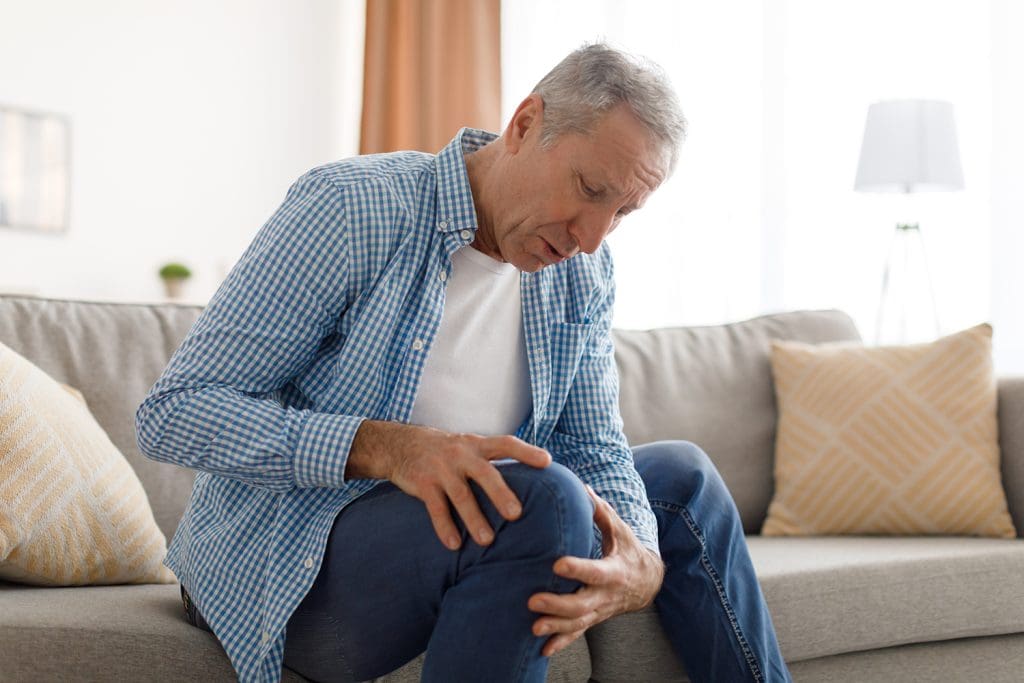
Medial collateral ligament (MCL) Injury
A sprained or injured medial collateral ligament or MCL injury is a ligament tear on the inside of the knee. This injury is usually the result of twisting or direct impact on the knee. Early treatment is the key to long-term success with this injury.
Medial meniscus tear
A meniscus tear is a tear to the inside cartilage ring of the knee. This is a prevalent injury in sports and activities that involve twisting and bending the knee.
Anterior cruciate ligament tear
Anterior cruciate ligament (ACL) injuries are common in sport. Most ACL tears occur from non-contact injuries. Non-contact injuries result from cutting (side-stepping), twisting and changing direction. Rehabilitation is important with ACL injuries
Iliotibial band syndrome
Iliotibial band syndrome is pain on the outside of the knee and is sometimes known as runners knee, ITB syndrome or ITBFS. It is a common injury in sport.
Jumpers knee
Jumpers knee or patellar tendonitis is an overuse injury that results in pain at the front of the knee, localised at a point towards the bottom of the kneecap. Patellar tendinopathy is a similar term that describes this injury.
Osgood Schlatters disease
Osgood Schlatters disease is the common cause of knee pain in children aged 10 – 15 years old. It can result in a painful lump at the front of the knee that is visually obvious in most cases.
Patellofemoral pain syndrome
Patellofemoral pain syndrome (PFPS), is also referred to as runners knee, patellofemoral joint syndrome and anterior knee pain is a term that is used to describe pain experienced at the front of the knee and around the knee area.
Lateral collateral ligament (LCL) injury
A lateral ligament sprain is an injury to the outside of the knee that occurs because of a tear to the LCL ligament. The most common cause of this is a direct blow to the inside of the knee, especially if there is some twisting.
Shin splints
Shin splint symptoms involve pain that comes on gradually on the inside of the shinbone. Shin splints are caused by the shin bone becoming bruised (stress response – bone bruise) and then forming small stress fractures. It is common in runners, splinters and athletes involved in jumping sports..
Calf pain
Calf pain is common in many athletes and individuals involved in sports participation. Calf pain can result from tightness, calf strains and a variety of other calf muscle problems.
Calf strain
Calf strains are also known as calf tears. Calf tears can result acutely (suddenly) or overtime (chronically). Calf strains are common in sports such as AFL and soccer. Many runners also get calf strains.
Peroneal tendonitis
Peroneal tendonitis is an injury that occurs to the muscles and tendons of the peroneal muscles. These muscles reside on the outside of the calf muscle. It is a common injury in sports and running athletes.
Ankle and Foot Pain
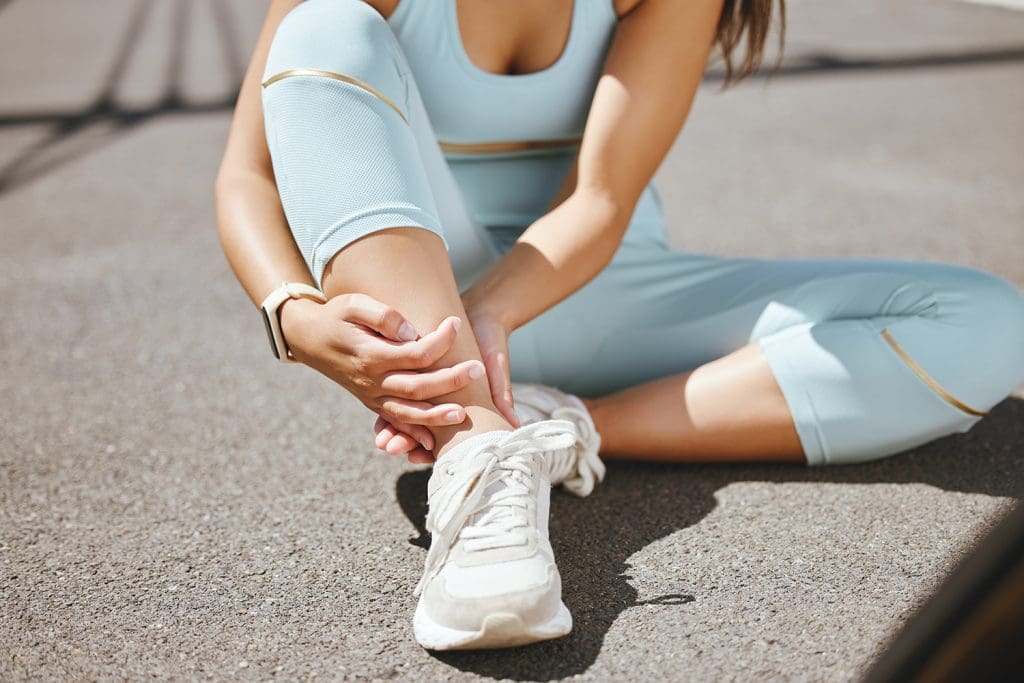
Lateral ankle sprain
Ankle sprains are the most common injury of the ankle. They can be minor to severe. Typically they are graded I to III with grade III being the worst. Of all the types of ankle sprains, a lateral ankle inversion sprain is the most common. Our chiropractors use the highest standards in lateral ankle sprain treatments to give you the very best outcomes in your recovery.
Medial ankle sprain
A medial ankle sprain is also called a pronation-eversion sprain and occurs when you roll your ankle and stretch the inside ligaments of the ankle.
Broken heel bone (Calcaneal fracture)
A calcaneal fracture is a troubling condition that will render patients immobile for some time until the fracture heals.
Extensor tendinitis
Extensor tendinitis is the common name for inflammation that occurs on the top of the foot and ankle. It is common in athletes and people who engage in running and walking.
Metatarsal fracture
Metatarsal fractures include stress fractures that occur from overuse (repetitive stress) or acute fractures that result suddenly from a large injury.
Bunion
Bunions are a common deformity of the big toe. Chiropractic treatments can help reduce pain and improve function. Non-surgical treatments include support, padding and modification to the toe function along with strength and mobility exercises.
Heel spurs
Heel spurs are bone outgrowths that form on the heel bone. Heel spurs are common in the community and may cause heel pain. Many heel spurs are not symptomatic and do not cause heel pain. A proper assessment is needed to detect the cause of heel pain even in the presence of heel spurs.
Achilles tendonitis
Achilles tendonitis is a term that refers to inflammation of the Achilles tendon or its covering. It’s an injury that commonly occurs to those who jump and jog or run regularly.
Anterior ankle impingement
Anterior Ankle Impingement is a condition where an individual experiences discomfort and pain in the front part of their ankle. Anterior ankle impingement is caused by compression of bone or soft tissue structures during activities that involve maximal ankle bending motion.
Calf muscle tear
Calf muscles tears are common injuries. Tears are typically caused during activities that require running, jumping, or sudden stopping.
Shoulder and Arm

Frozen shoulder
Frozen shoulder is a condition that is complex and the causes not well understood. Frozen shoulder is also caused adhesive capsulitis. There are three phases of frozen shoulder that range in varying degrees of shoulder pain and stiffness..
Rotator cuff tear
Rotator cuff tear is a common condition that presents to our chiropractors at Sydney Spine & Sports Centre (S3C). Chiropractic treatments are important to reduce pain and restore movement and function following a rotator cuff tear. A correct diagnosis is essential to effective treatment and early recovery
Biceps tendinitis of the shoulder
Biceps tendonitis is a troubling injury for anyone it affects. It can occur after an acute injury such as a fall or constant irritation from occupational and sporting stresses.
Biceps tendon tear in shoulder
Biceps tendon tears can be a constant source of annoyance and frustration, as recovery times can be long. Chiropractic treatments are important to reduce pain and recover lost function.
Chronic shoulder instability
Chronic shoulder instability can be a source of pain and irritation, especially when performing sports and activities that require overhead movements.
The unstable painful shoulder
The unstable painful shoulder is described as shoulder pain caused by instability and the consequent irritation of shoulder joint structures such as tendons, joints, and ligaments. Having instability in the shoulder can be a major problem for athletes and active individuals, especially if their sporting activity requirements overhead movements.
The weak painful shoulder
Shoulder weakness and pain is typically caused by muscle or tendon problems in the rotator cuff, biceps or accessory shoulder structures such as bursa. We call these rotator cuff tendinopathy, subacromial pain syndrome (SAPS), or bursitis (bursopathy). An experienced chiropractor will test your shoulder with a range of special orthopaedic tests to discover which structure is causing the weakness and pain.
Shoulder impingement
Shoulder impingement can potentially happen to all of us as we move our arms above our head. This causes compression of our shoulder structures, in the subacromial space, and this can lead to pain and inflammation. Over time this can lead to bursitis, tendinopathy and tendinitis. This is the most common presentation of shoulder pain to a chiropractor.
Dislocated shoulder
Following dislocation of the shoulder, intensive rehabilitation is important. The main aims of chiropractic after dislocation is to reduce pain and restore function.
SLAP tears of the shoulder
The biceps tendon attaches to the shoulder at the superior gleniod labrum, a piece of cartilage that makes up the shoulder socket. SLAP tears are caused by the bicep tendon pulling off this cartilage.
Arthritis of the shoulder
There are different types of arthritis of the shoulder and the most common is the wear and tear arthritis known as osteoarthritis. Rheumatoid arthritis or posttraumatic arthritis are also types of arthritis that affect the shoulder.
Wrist and hand
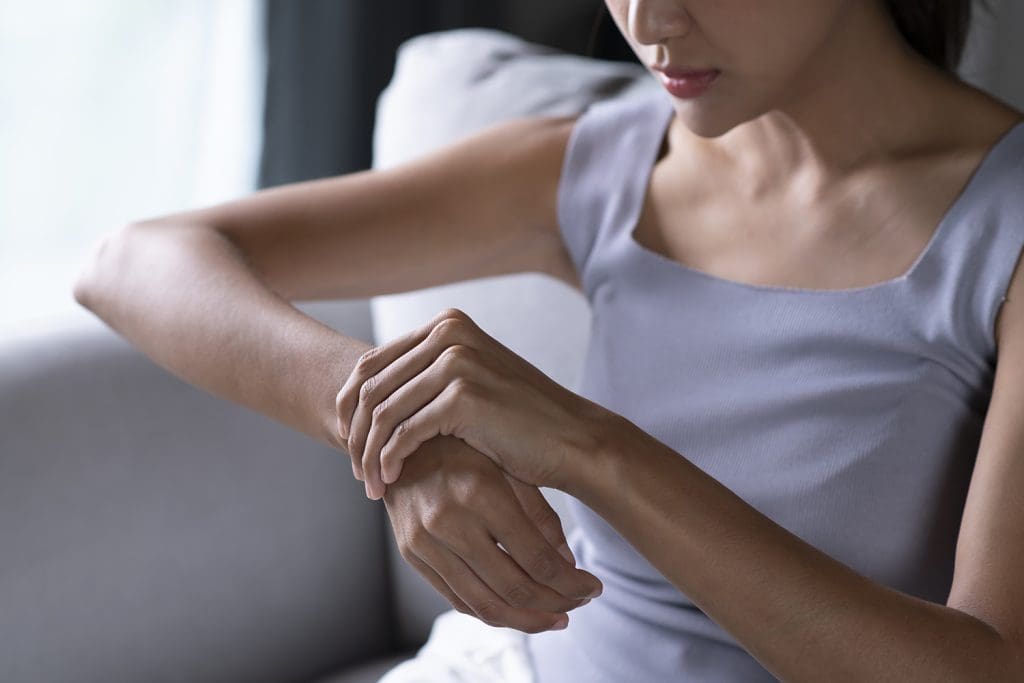
Wrist sprain
Wrist sprains are common injuries that are often the result of a fall onto an outstretched hand. While other accidents and impacts can cause a sprained wrist, it is often the result of a forward or backward bend. Wrist pain that comes on gradually is usually from repetitive strain injury (RSI), such as carpal tunnel syndrome.
Broken wrist
A broken wrist involves a break or fracture in the wrist end of the ulna forearm bones, radius bones or any of the small carpal bones located in the wrist.
Scaphoid fracture
Scaphoid fractures commonly occur with wrist sprains. Early detection and treatment are needed to avoid complications.
Sprained thumb
A sprained thumb is the result of the thumb being bent in a direction outside of its usual range of movement. This causes damage to the ligaments of the thumb that support the joint.
Broken finger
A broken finger is a common break or fracture in one of the three bones that make up the fingers called phalange bones. There are many causes of a broken finger, most of which involve it being crushed in between objects or bent by force, impact or collision.
